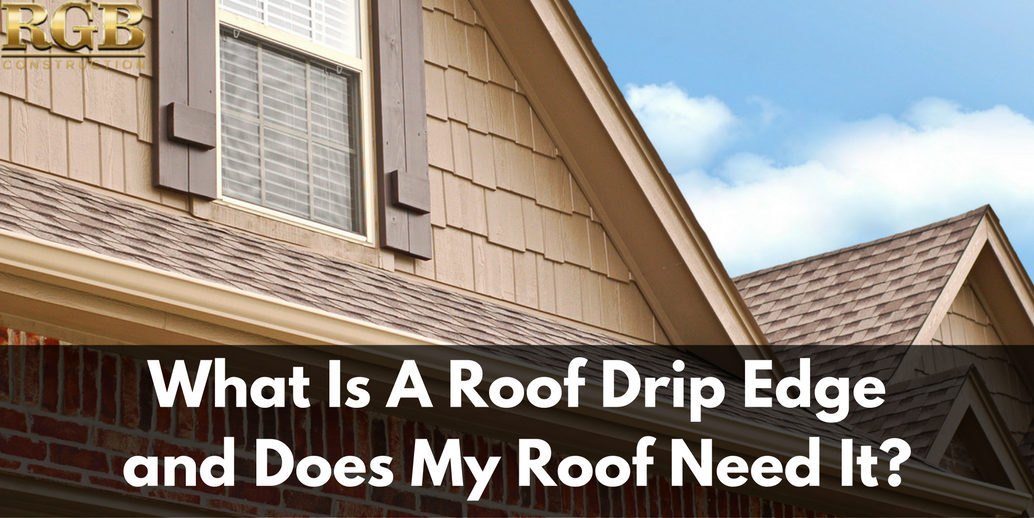Let’s face it, many homeowners may not be aware of what a roof drip edge actually is or what it does for a roof, and if they are aware, they may be talked out of installing it because of cost factors involved with roof replacement or repairs.
The problem is that a drip edge is technically supposed to be part of any shingle roof manufacturer’s installation instructions and the process is recommended as an application by roofing associations. So, the answer to the problem involves talking with a local roofing contractor, like RGB Construction, and finding out the details concerning drip edges and why they are often omitted from roofing or re-roofing projects.
Drip Edge Answers
So what is a drip edge? A Drip edge is a metal flashing that is installed at the edges of the roof to help control the flow of water away from the fascia and to protect the underlying roofing components. One reason why drip edging is excluded from roofing installation projects is that it is often not part of a roofing bid. A homeowner is usually given a price for simply installing a shingle roof, and unless the roofing job includes the specific use of drip edges, the edging will be disregarded in the bid submission process and actual instructions for installation.
When a drip edge (metal flashing at a roof’s edge) is part of a required installation, the specifics of the edging are also often neglected in relationship to the type of metal used, its gauge (metal thickness) and its dimensions. There are even freelance roofers who believe that drip edging simply is not necessary and feel that any dripping or moisture buildup on a roof can be eliminated by extending shingles over the edge of the deck where water and any kind of moisture accumulation can go into gutters and away from a house or building.
Moisture Accumulation
With moisture accumulation being a factor with shingle deterioration, it is important to locate the drip metal edging where the moisture can be quickly eliminated, which is at the eaves or edges of the roof that overhang a supporting structure. A felt underlay or overlay is also an option with drip metal edging as it does help to minimize moisture buildup. Proper and careful installation are also part of what makes drip edging effective and if it is not run in a straight line, it can be left short of the edge, which will limit or decrease the overhang for protection against moisture.
Why Drip Edge is a Necessity
The edges of a roof that receive the most moisture, particularly those of irregular or steep-sloped homes require the most protection, and any shingles that extend beyond a certain point are going to eventually bend and fracture along the edges, which means if the drip edge is missing or has been eliminated from an installation, water can get under the shingles and cause staining and deterioration of the lower roof deck area and the band under the roof edge (fascia board). If the condition exists for any length of time, the roof joists or trusses that connect the fascia board can also be affected.
Inclusion of Drip Edge
A roof installation that follows manufacturing standards and recommendations will specify that a drip edge be included. Whether installing a new roof on a home or undergoing new construction of a home, inclusion of a drip edge should be part of any quality roof installation package. If a new roof is going to maintain soundness, and value is going to be added to a home, a drip edge is a necessity. Without it, the integrity of a roof is compromised and damaging effects to shingles and other parts of a roof will be observed in the years that follow, which will eventually lower the value of a home.
In order to avoid the damaging effects of excluding drip edge in a roof installation, speak with a roofing specialist at RGB Construction by calling 856-264-9093 complete the contact form and a representative will explain to you why drip edge is a necessity. If you simply need answers concerning drip edge, we will give you a rundown of why your roof can maintain its life and increase the value of your home at the same time with the use of drip edge.







